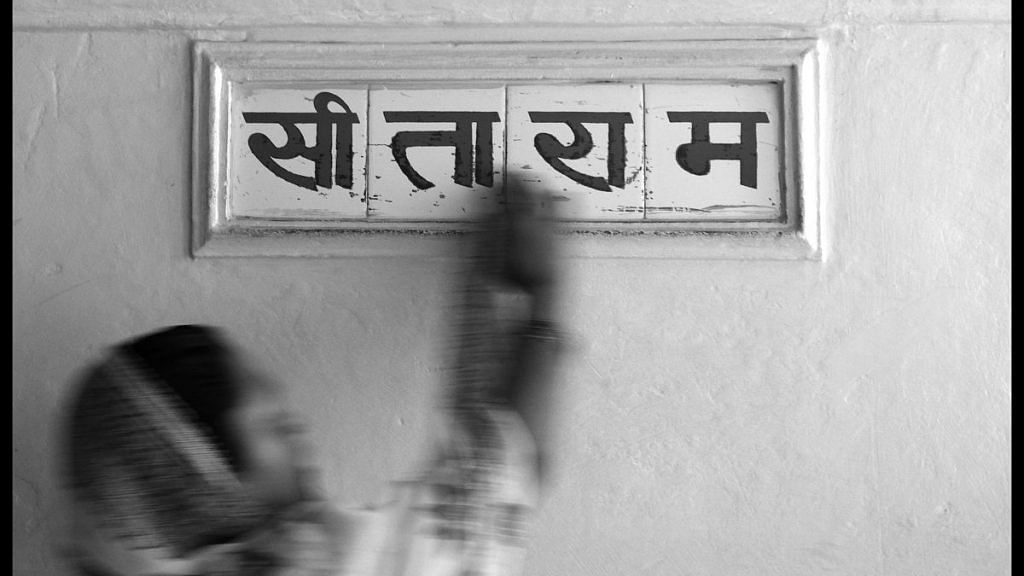In Ayodhya, you will almost never hear a woman devotee, either a resident or a pilgrim, use the slogan “Jai Shri Ram“. It is always “Sita-Ram-Sita-Ram” that you hear being chanted.
Most of the older male pilgrims who come to Ayodhya from rural areas will not take Ram’s name by itself. But it is different with the younger male visitors and those indoctrinated by the Hindutva forces at play in India now. These men know no other greeting or slogan but “Jai Shri Ram“, and it is often shouted at you with clenched fists.
Photograph by Prashant Panjiar
Traditionally, the only time when “Jai” was used in a slogan in association with Ram was in the invocation “Siyavar Ramchandraji ki jai (Glory be to Sita’s husband Ramchandra)”. Greetings exchanged between people where Ram’s name was used were usually “Ram-Ram” or “Jai Ram ji ki“, spoken with a certain softness, never with aggression.
Also read: Hindu gods like Rama & Shiva have six packs now to kill bad guys, like American superheroes
In the 1980s, as the Hindutva movement picked up steam, the Vishwa Hindu Parishad and the Bajrang Dal carried out a campaign pasting stickers on doors of homes saying “Ram-Ram Chhodo, Jai Shri Ram Bolo“. They ordered Hindus to give up the gentle and loving traditional greeting “Ram-Ram” for the loud and aggressive “Jai Shri Ram“, which is now being forced down our throats even more under the Narendra Modi era.
Even in the visual representation, there was a distinct shift – from faith to a political use of the image of Ram. This took two forms: the first was the removal of Sita and the other was a newer heroic, muscular image of Ram. The older traditional images of Ram where he is shown mostly as a benign benevolent being, often almost feminine, has now been entirely replaced by a singular new Hindutva-inspired image of Ram – a warrior with no Sita by his side.
Photograph by Prashant Panjiar
For us, India is feminine and we refer to it as our mother. Even though the slogan “Bharat Mata Ki Jai” finds favour with the Hindutva forces, in actuality, their representation of our nation is decidedly male since militant religious nationalism has no place for compassion, tenderness and humility. It thrives on jingoism, aggression and domination. So, let us not make the mistake of believing that the use of certain words, phrases and visual representations is innocent. “Jai Shri Ram” is a new construct loaded with political undertones and very much part of the Hindutva movement.
Also read: The rise of the communal hate soundtrack in India
These images were made in Ayodhya while continuing my long-term work that I began in 2002 – a photographic portrait of the town that has been at the centre stage of India’s contemporary social and political history.
The author is a photographer and curator. Views are personal.
